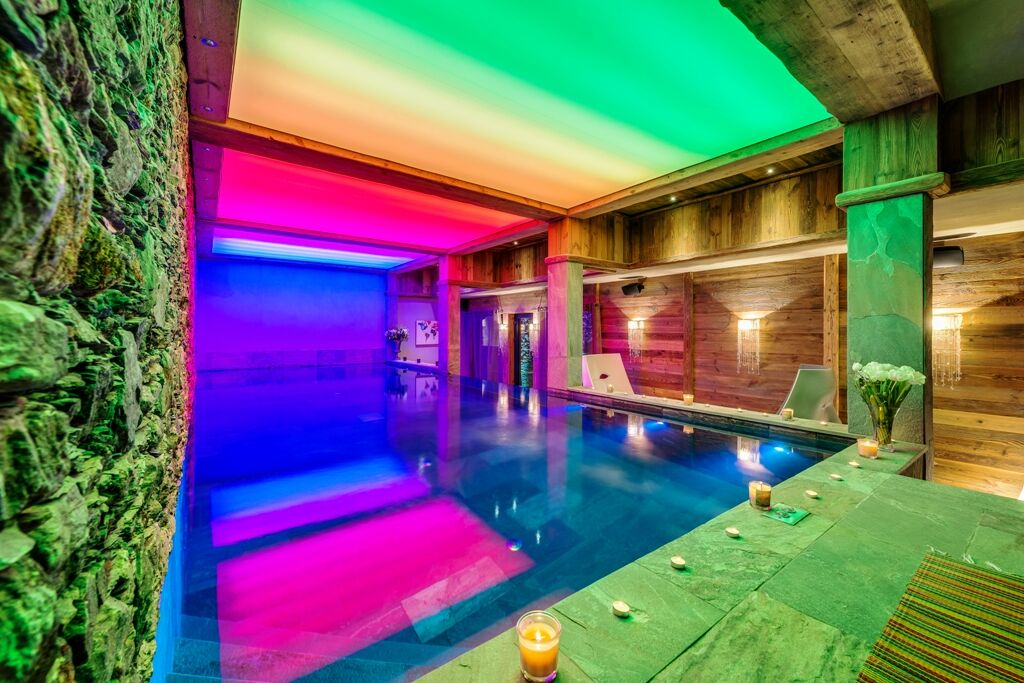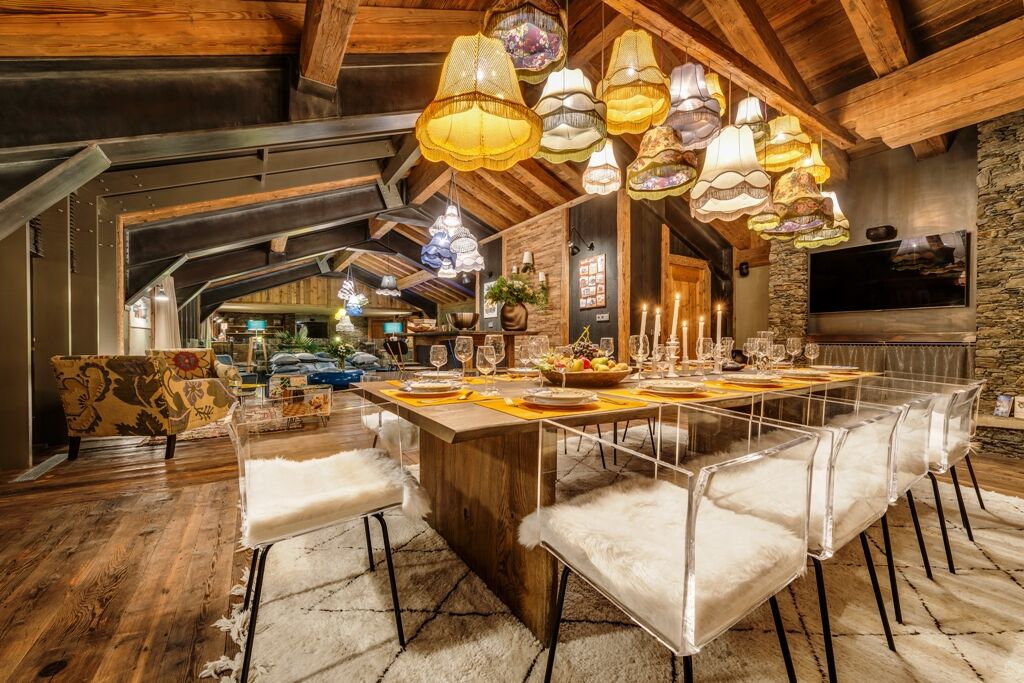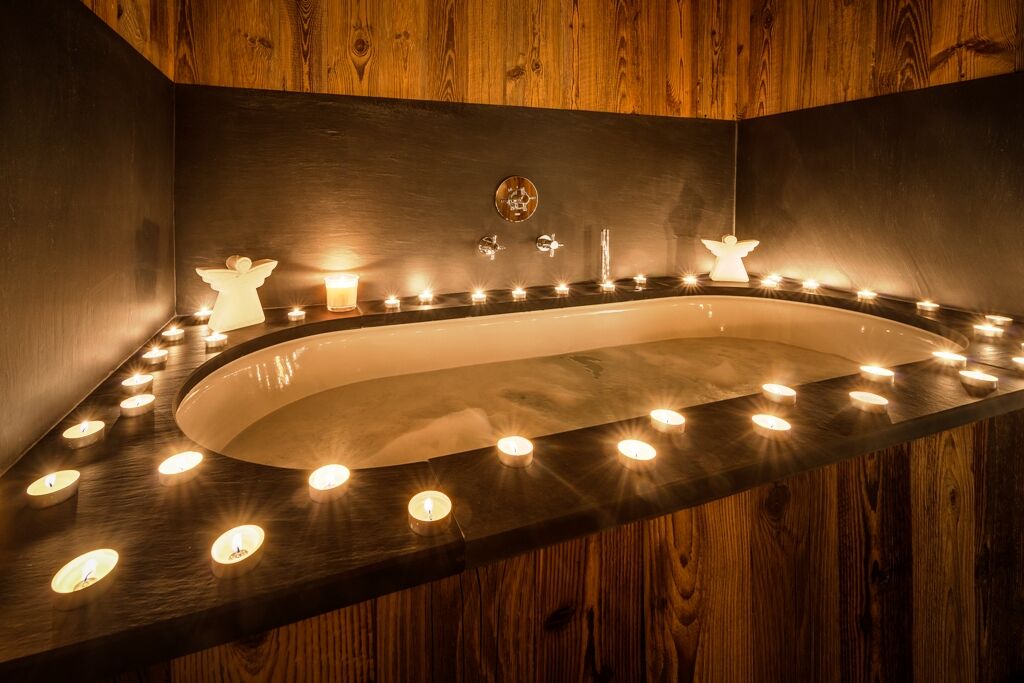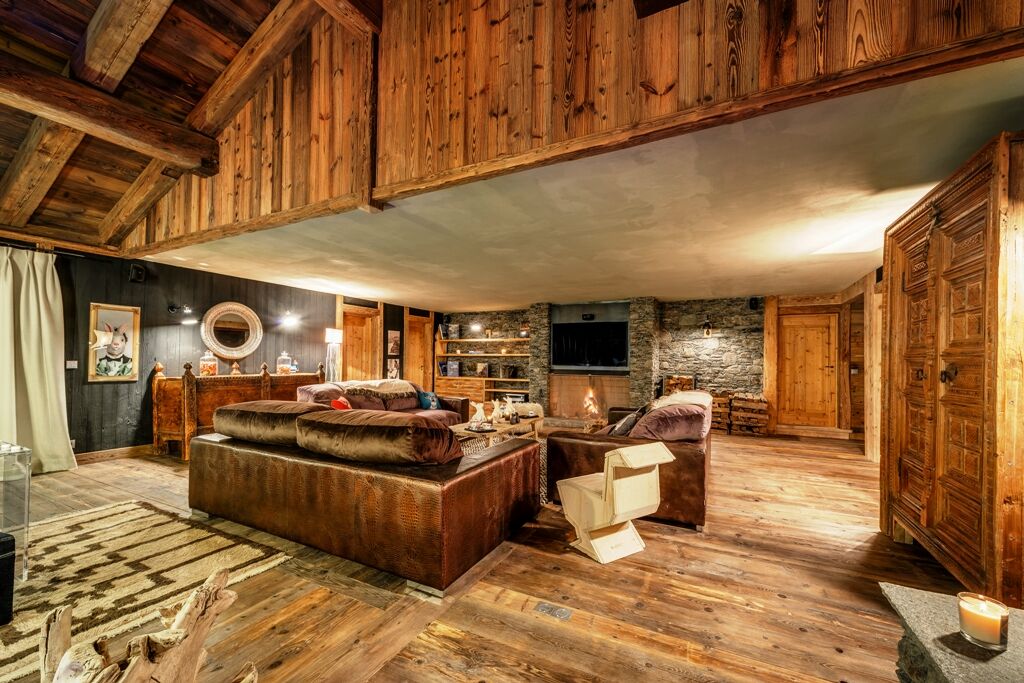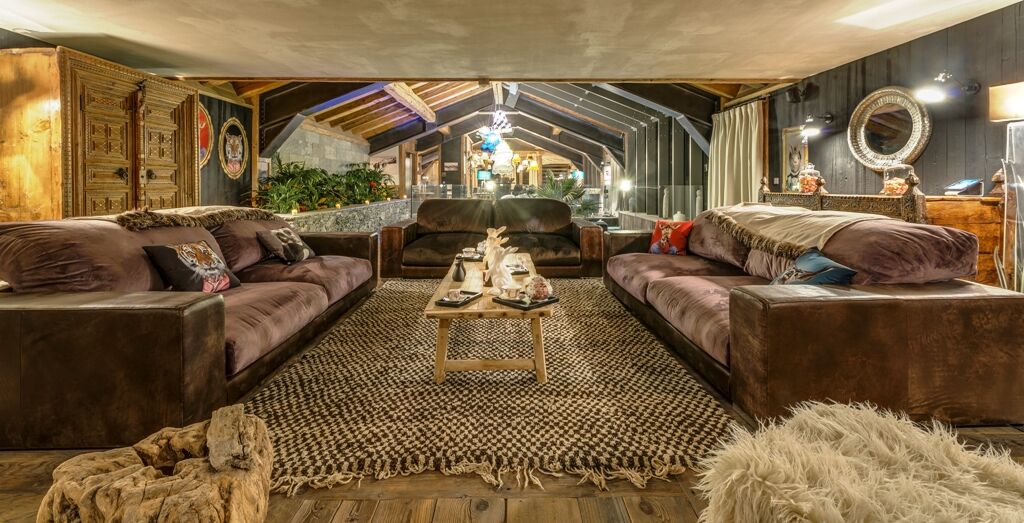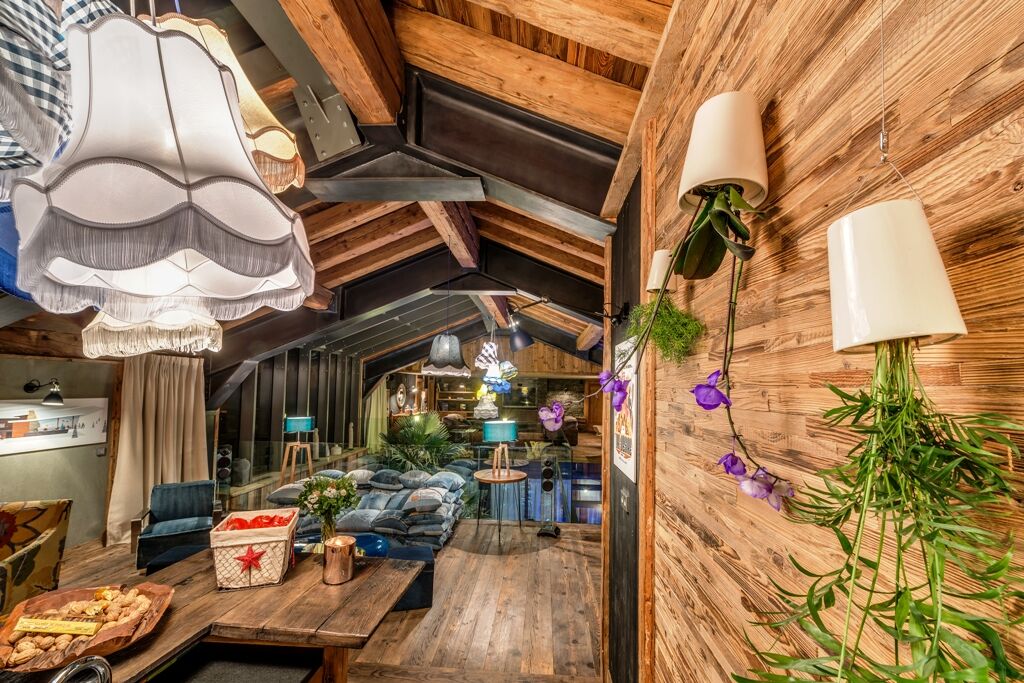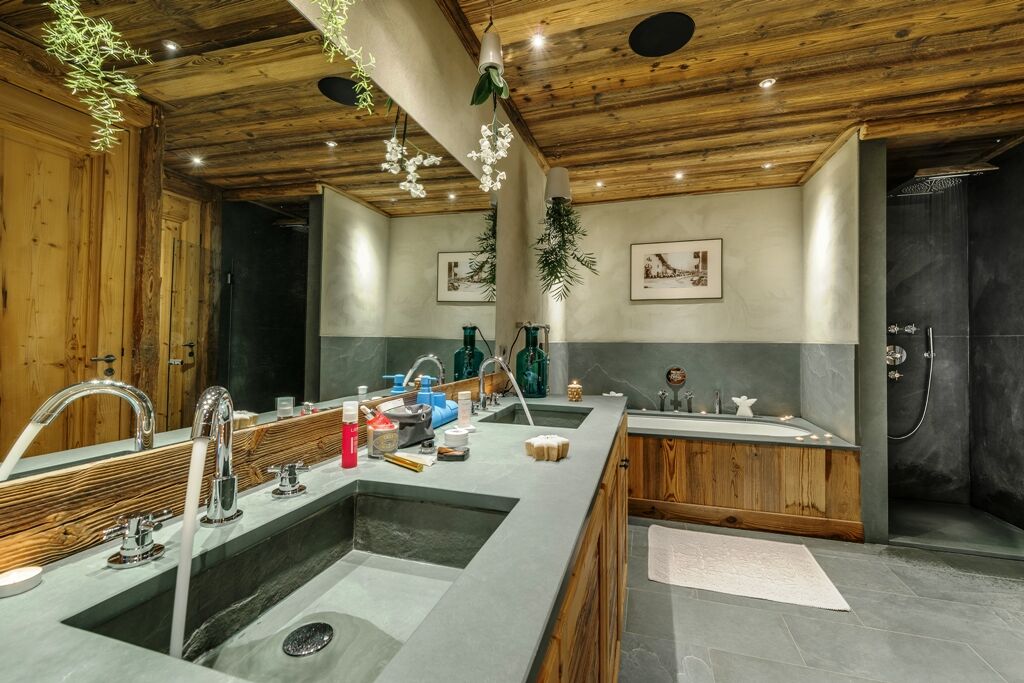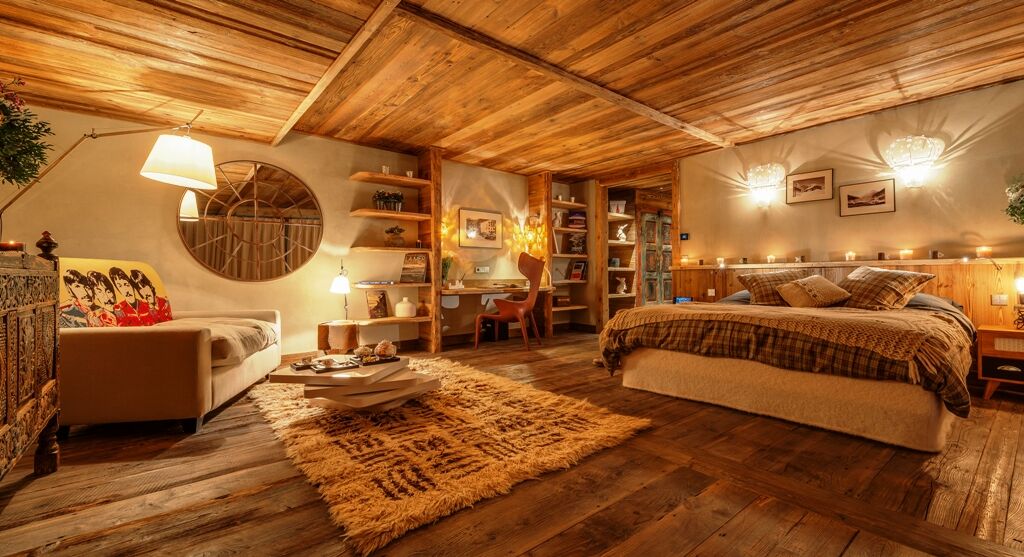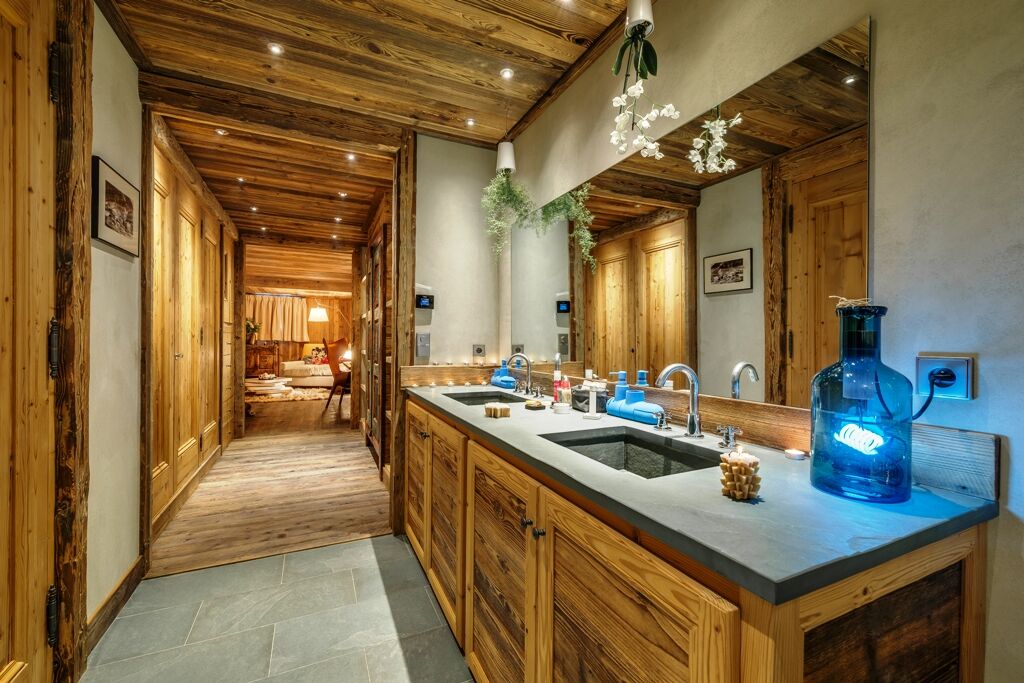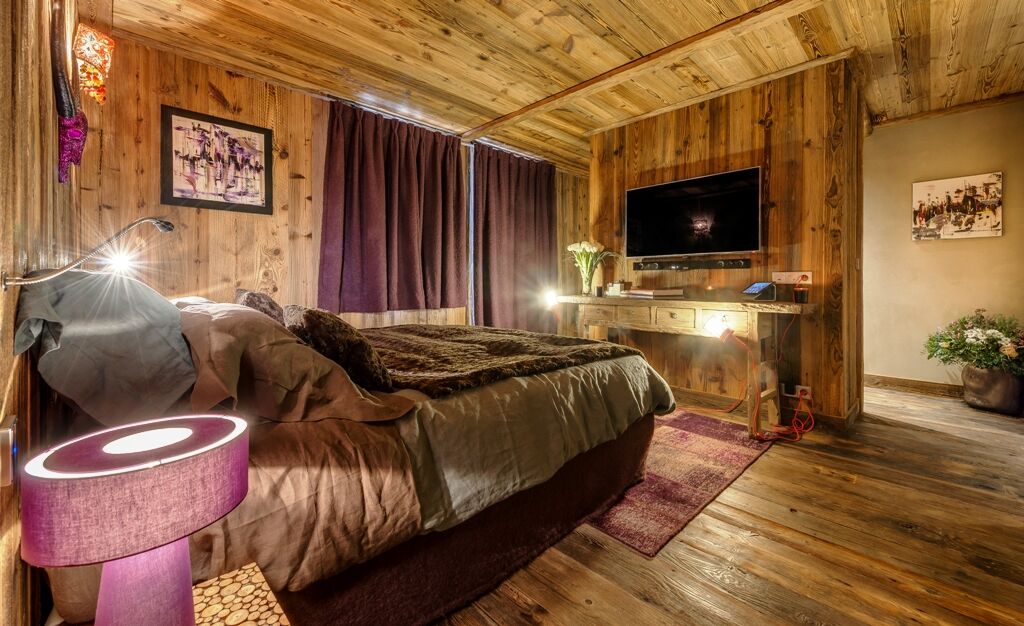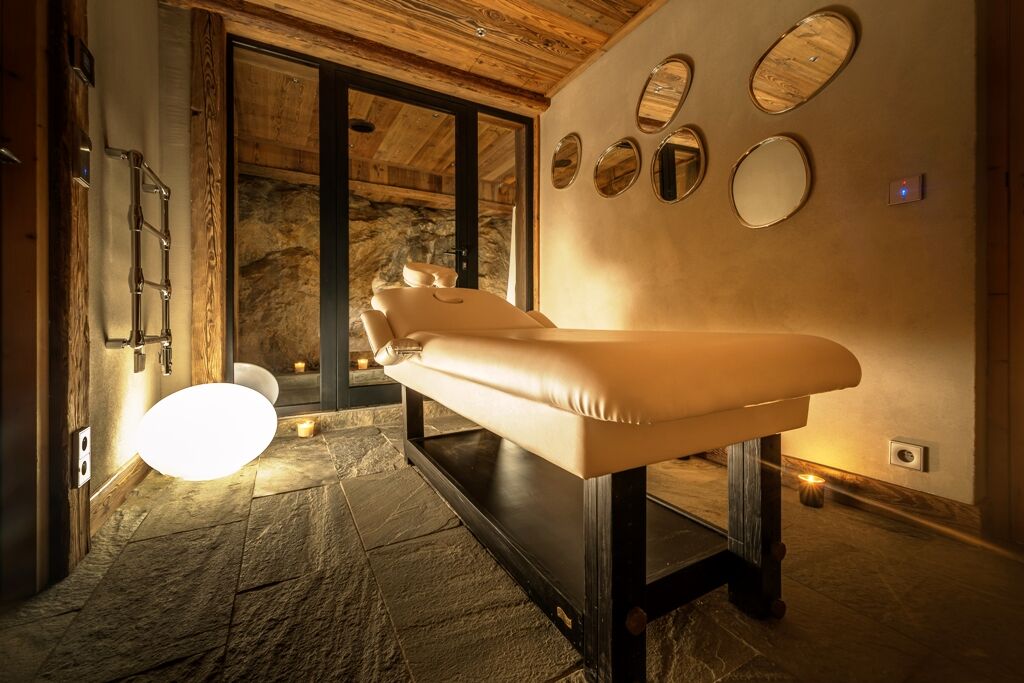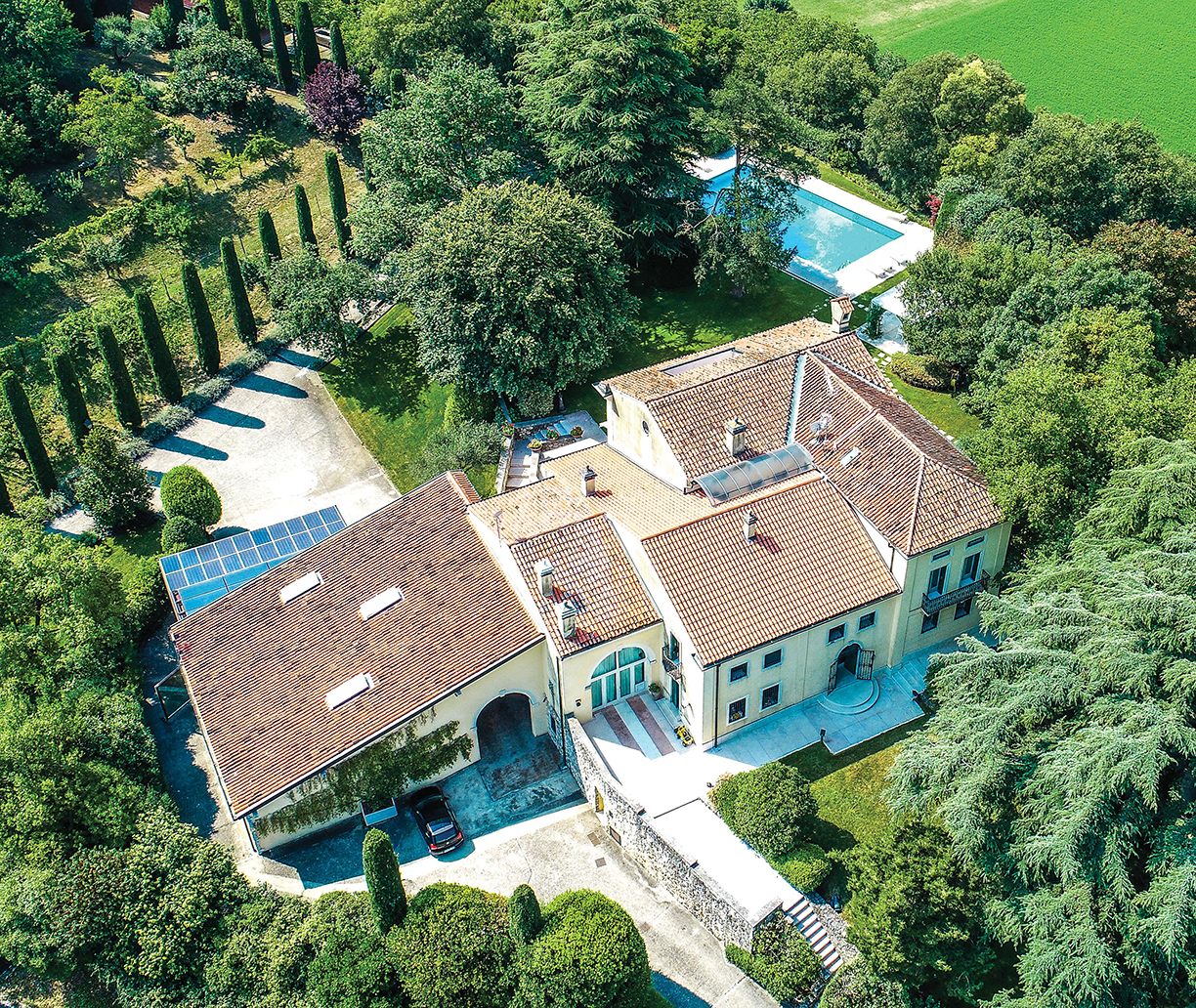
Elegance, timeless Italian taste, and craftmanship blend in this recently renovated, three-story, 7,480-square-foot, five-bedroom, four-bath villa, which is all surrounded by a six-acre, private, garden.
“The winter garden is a very special feature of the house that allows you to keep contact with nature throughout the year,” says listing agent Giuseppe Porcelli of Berkshire Hathaway HomeServices MAGGI Properties, who is listing the home for 4.5 million Euros.
High-end finishes include genuine venetian-style marble flooring in the living area, Chantilly parquet pattern flooring in the master bedroom and walk-in closet, precious Bisazza mosaic in the baths and exposed wooden beams in the winter garden. And, energy efficiency is guaranteed by solar panels and a hydro-power plant.
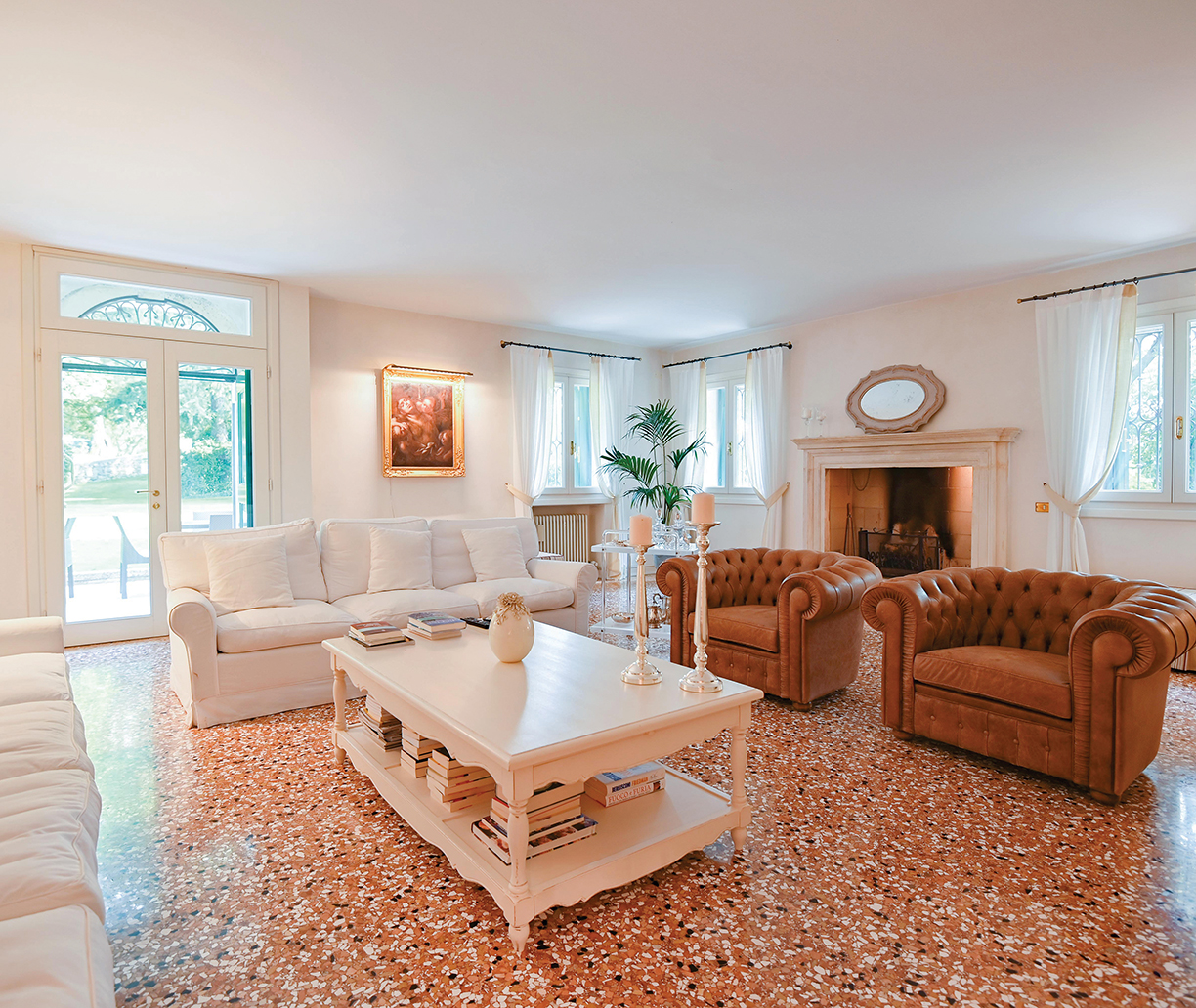

“The vibe of this home is elegance, mixed with functionality, for a homeowner who wants to live in a property where you don’t want to sacrifice comfort for design’s sake,” says Porcelli. “Still, every corner of the house has been fully renovated, with prestigious materials, such as the the typical Venetian floors.”
Additional features include an indoor and outdoor heated swimming pool and sauna.
“Visitors enjoy the outdoor and indoor pool, and the latter can be accessed directly from the bedrooms on the upper floor through a design staircase,” says Porcelli.
Also enjoy a unique view of the Venetian countryside from multiple terraces. Venice, Verona and Lake Garda are less than a 50-minute drive away.
“This home would be perfect for a family who enjoys having guests over, be it for a dinner party, a family reunion or, why not, a pool party,” says Porcelli.
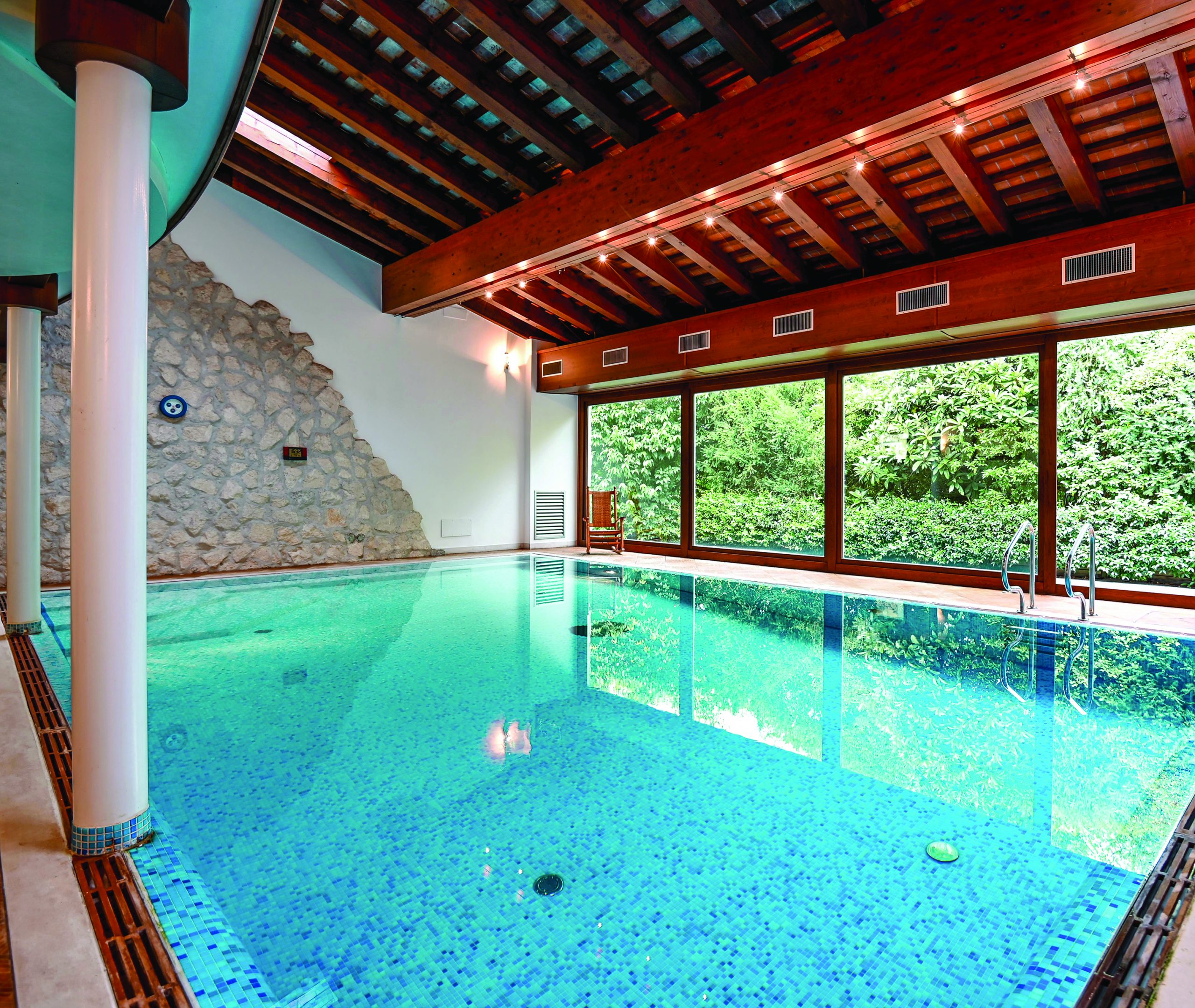
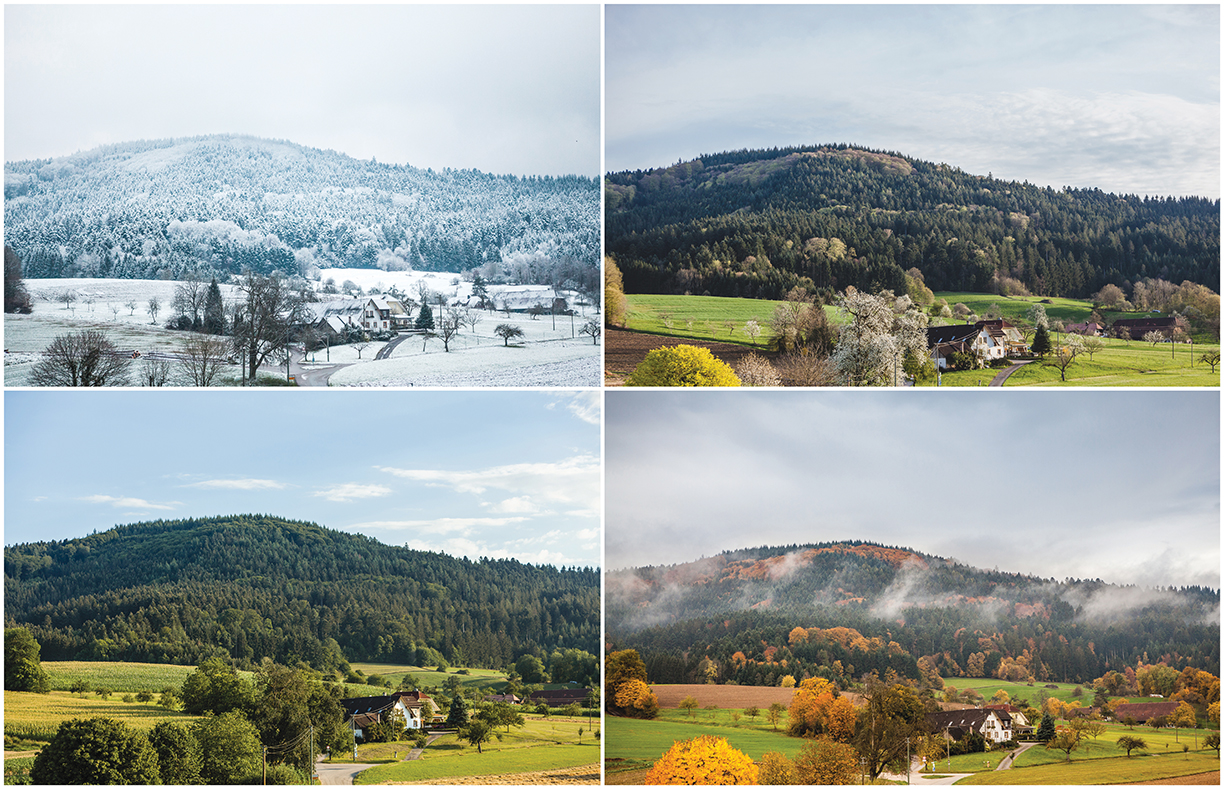
©istockphoto.com / Arita Cimermane
“The seasons in the landscape, much like the seasons of one’s life, are to be embraced, appreciated and weathered.” — Robin Kramer
When it comes to the seasons, an adaptable landscape is always a challenge. In northern climates, the focus is too often on the fleeting warmer months where blossoms are abundant and beautiful. Into late fall, the vibrant leaves have fallen and a bare winter — and landscape — sets in. In warmer areas, the challenge is less about the seasons and more about weather extremes such as droughts or rain.
We talked to luxury landscape designers about how they work through the challenges of the changing seasons and find beauty in the landscape all year long.
A Strong Framework
“I consider structure to be the most critical component in any garden. A successful garden design will look good in any season if the bones of the garden are well designed,” says New York City-based Landscape Designer Robin Kramer. “Paths, walls, edging, hedges, pergolas and water features are the permanent features that make a garden strong and confident. The flowering plant material is the dressing of the landscape and can easily be modified based on the desires of the gardener.”
“Ideally, a landscape is something that transitions throughout the year and it has its glory days throughout every season,” says Vermont-based Landscape Designer Ashley J. Robinson. “They are rarely looking for a one-shot wonder with a full-on explosion of bloom in the spring.”
Robinson seeks out materials such as wood, metal or other elements that are not herbaceous in order to craft a composition that is visually intriguing despite the blooms, or lack of blooms. “Natural stone, boulders, outcropping in the garden. A well-intentioned feature is important for a winter garden.”
Similarly, Teresa Watkins, a Master Gardener and specialized horticulturist for over 20 years in Florida, relies on hardscape and garden art to design spaces that truly fit a client’s personality, while at the same time ensuring the health and sustainability of the landscape. “I have an ongoing two-year project designing a formal estate landscape with a rose garden with walls, a faux stone bridge, butterfly garden, water features, orchard, meandering pathways and poolscaping.”
An architectural framework is key to high-end landscape, and Pennsylvania-based Landscape Designer Donald Pell is an expert at finding a balance of this within a range of vernaculars — from English-style to modern. “Our work always includes thoughtfully designed architectural spaces. These can be simple and they can be very substantial,” he says. “Right now, I am building a very large promenade through a woodland
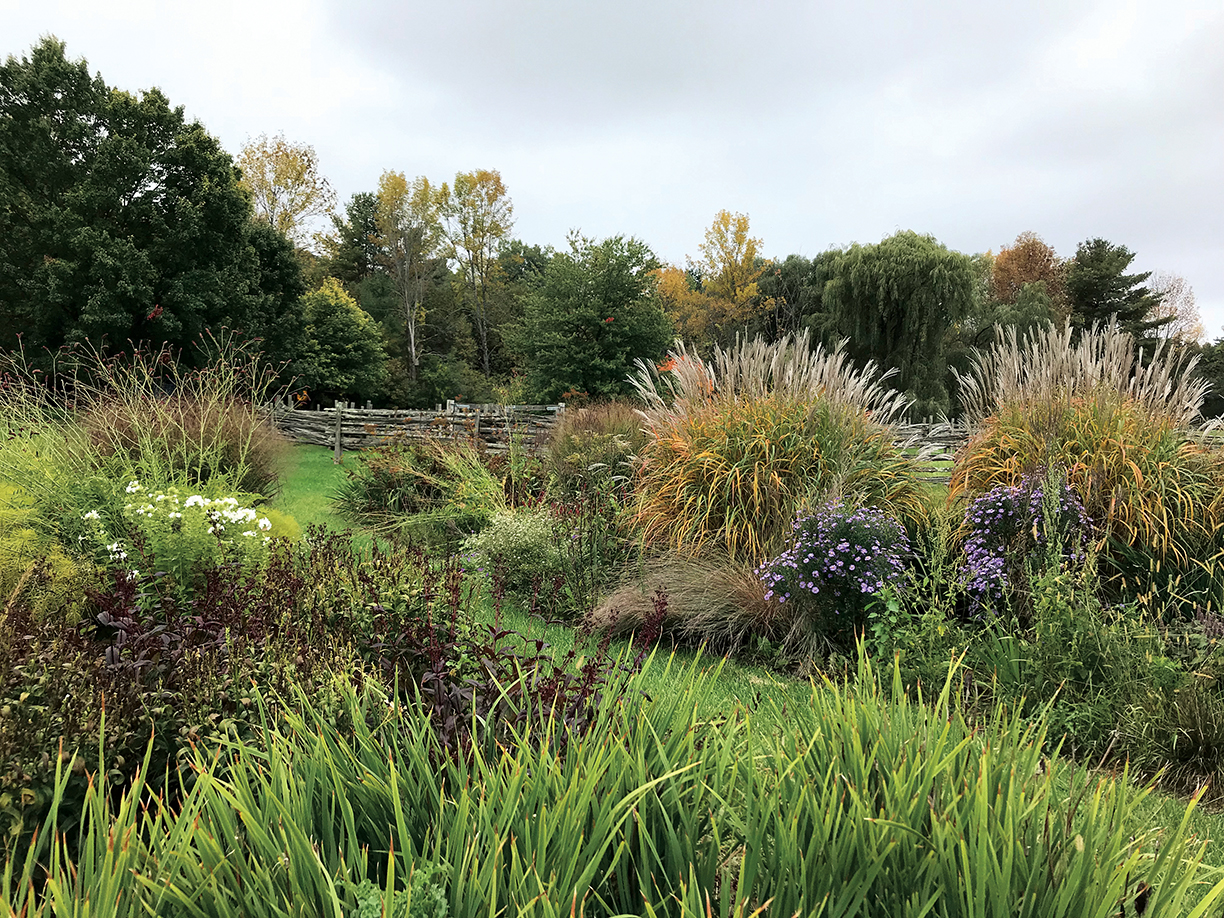
|
A beautiful wild garden crafted by Vermont Landscape Designer Ashley J. Robinson. Photo courtesy of Ashley J. Robinson. |
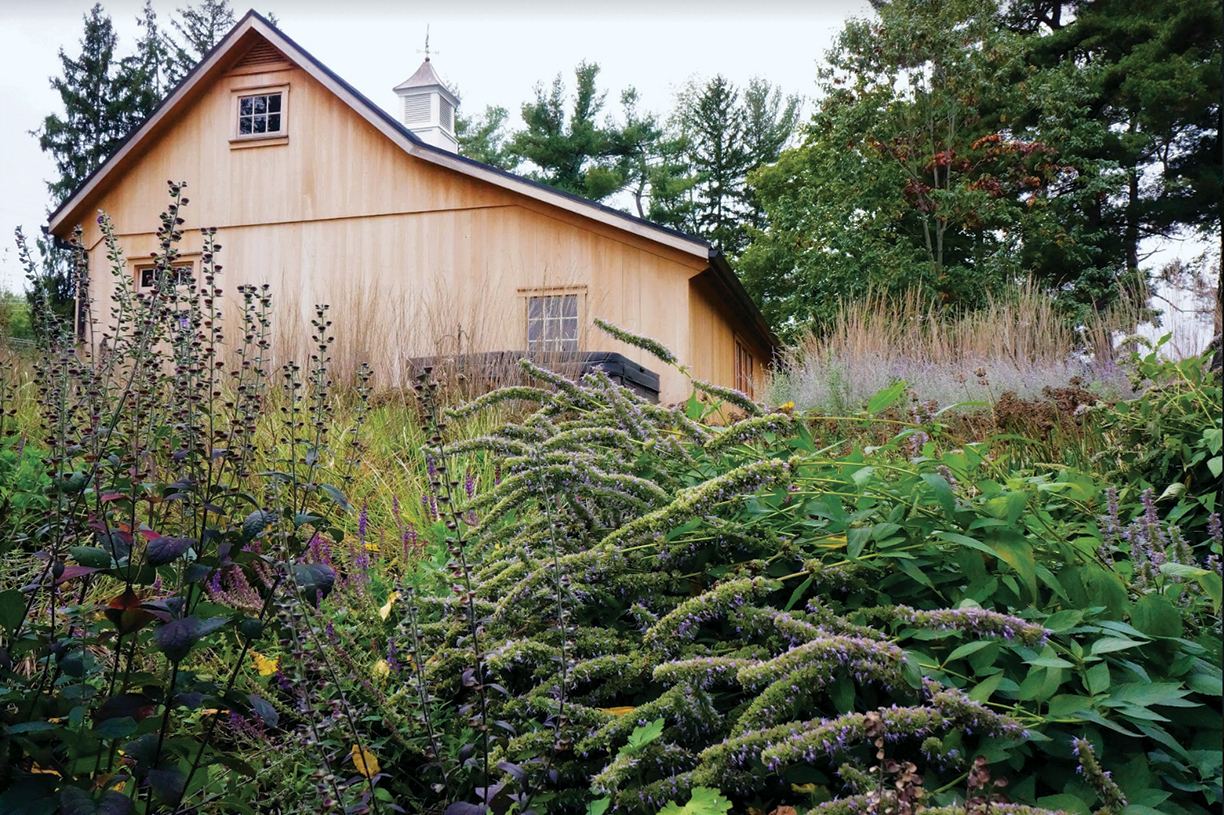
|
Donald Pell Gardens gave this 1700s Colonial Farmhouse garden an update with native and cosmopolitan plants used to evoke the regional landscape. Photo courtesy of Donald Pell. |
that I would describe as very classical, and the plantings are very much impressionistic woodland. I specified hand-cut fieldstone curbing with paths that has a Pennsylvania Colonial feel, and I really like bond pattern paving details angled from the home, which tend to be very modernist.”
When it comes to warmer climates, such as those of the Sun Belt, structure has less to do with looking good throughout bare seasons, but more to do with a landscape that can sustain year-round outdoor living. “For contemporary homes in Southern California, the indoors rolls right outside,” says landscape architect Scott Zucker. “You’ve got enormous sliding doors with pocket entry, kitchen and family rooms that pour right out onto the terrace.” In designing these homes, materials that can withstand the outdoors, but also look just as beautiful indoors is the challenge. A huge trend, Zucker points out, is utilizing porcelain or ceramic pavers that not only keep a stunning transitional look, but also require very little maintenance.
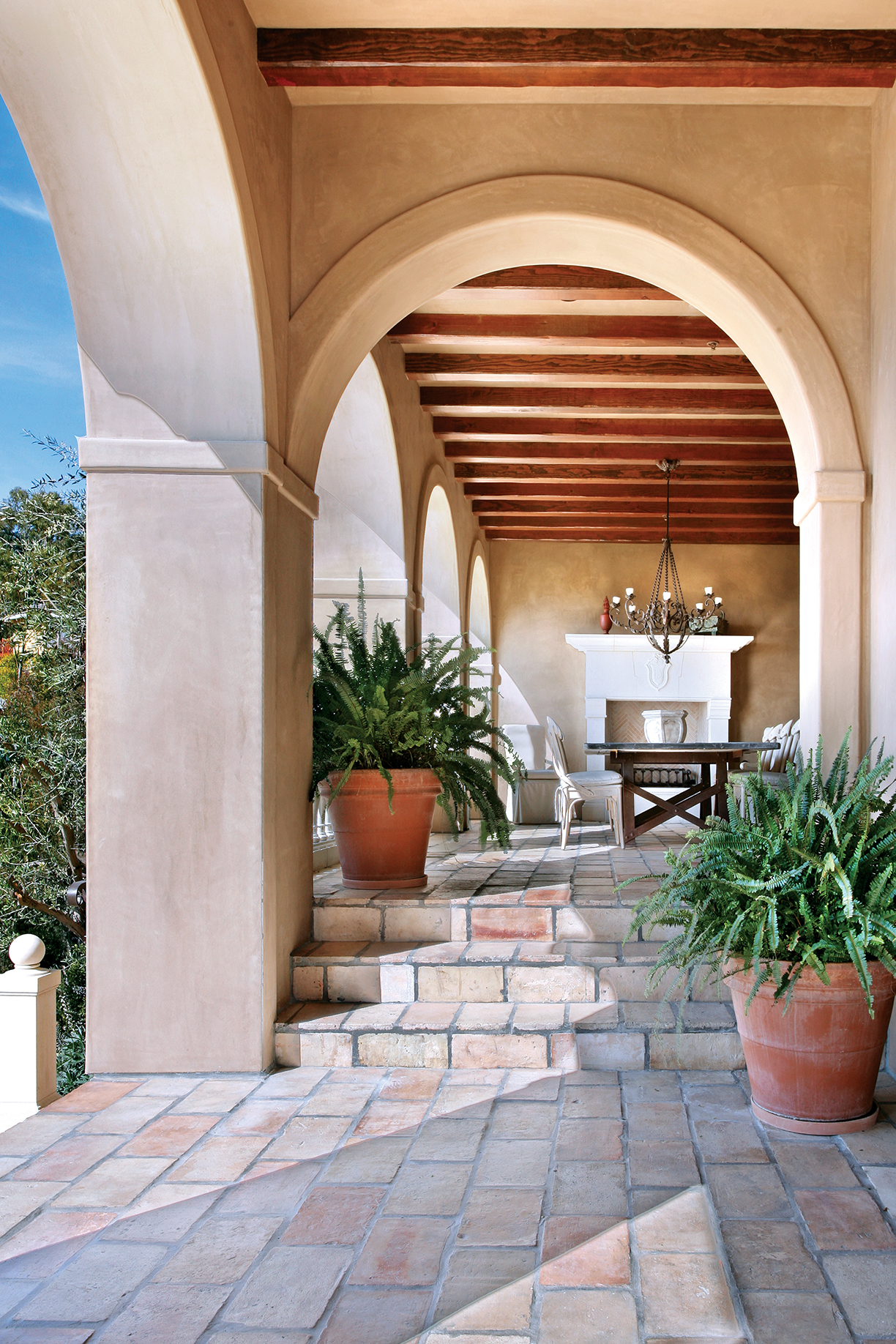
|
Above, an outdoor portico crafted from stone at a Southern California residence designed by Scott Zucker of Zucker Design Associates, Inc. Below, an arbor for a Laguna Beach residence offers an eye-catching landscaping feature. Top photo courtesy of Jeri Koegal. Bottom photo courtesy of Scott Zucker. |
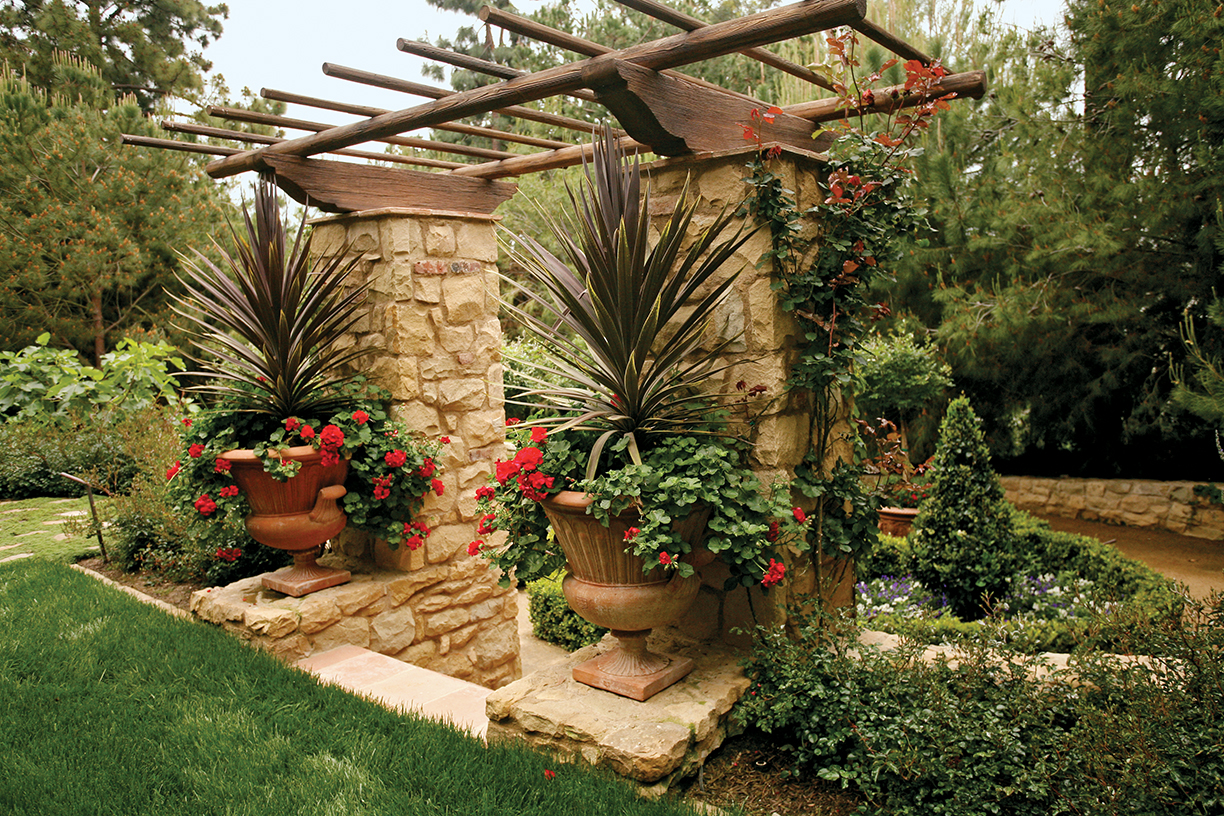
The Four Seasons
“The seasons themselves aren’t a challenge, but an exciting opportunity,” says Pell. “Even thinking about texture and emotion of the dead tissue of herbaceous plants can be an opportunity to compose something beautiful. It’s the same as working anywhere in the world — there are opportunities and constraints.”
While spring and summer’s spotlight is on the flower, that shifts completely when fall arrives. “I never focus on just the flower,” advises Pell. “They are just too ephemeral. They are, of course, an important component, but the structures of the plantings at their worst is where I start. I am looking for plants that look very beautiful in a given composition, and I want the composition to be able to hold up in extremes of weather.”
“Designing through the seasons takes careful planning and a thorough understanding horticulturally on the attributes of trees and plants,” says Kramer. “Floral succession bloom is created by selecting perennials that will create a parade of flowers from spring through to the first frost. This is supported by spring bulbs and flowering trees.”
“In fall, we plant thousands of spring bulbs. It is a late task in season, but such an important one,” continues Kramer. “In the spring, I want the ground to be punctured with green shoots pushing their way forward, poising for their bloom. After months of frigid temperatures and inches, even feet, of snow, New England begins to warm. Those rather odd-looking bulbs we planted are now a sure sign of spring and a reminder that we too, have survived another winter.”
“There’s a lot to be said for winter in the garden,” says Robinson. “It requires you to not do a lot of cut back or maintenance. Generally speaking, you should wait out the things you don’t want there, such as foliage debris and leaf litter — these things are good for increasing organic matter in the soil. You shouldn’t scrape landscape bare — it’s all about layering and allowing that to happen naturally.”
Warmer Climates
While places with warmer climates, such as Southern California or Florida, don’t have the challenges of designing through autumn and winter, they do have seasons of their own: dry season, fire season, and wet season.
“The water use in California really drives what we can and can’t do,” says Zucker, who mentions WELO (Modern Water Efficient Landscape Ordinance) and fire departments regulations, as well as restrictions on paving and the amount of non-permeable landscape a property is allowed to have. “One of the trends that is big in California these days — necessitated by lack of water — is drought-tolerant plants.” These include plants such as succulents or agaves that also offer stunning structural plant material that really create a powerful look for a landscape.
“When I’m working on my designs, I take into account not necessarily annuals or perennials, but the permanent flowers that clients especially desire so that at any time of the year it will be blooming,” says Zucker. “I tend to group plant material together to give a bigger impact. Instead of giving too many species, I pare it down so that aesthetically, from the front yard to the backyard, the whole landscape ties together.”
While Zucker is looking for colorful plantings that can withstand the lack of water, places like Florida experience the opposite — with a wet season that lasts at least half of the year. “Florida winter season can be dramatic. We can go from 85 degrees one day to 28 degrees the next, which is not enough time for tropical plants to acclimate to cooler temperatures,” says Watkins. “The other issues are temperatures averaging 85 degrees for six to seven months out of the year, where our plants can be growing all year, and over 50 inches of rain.”
It’s in these areas where irrigation designers are needed most fevertly along with specialized consideration of the amount of sunlight, soil moisture, soil pH — all extremes associated with the tropics. Without seasonal change, there is also a shortage of compost, plant material and nutrients, which is easily received each fall with the turning of the seasons in other parts of the country.
“I often say, all of life’s lessons are learned in the garden,” says Kramer. “Each season delivers reminders and rituals. It is the moments on which lives are built and cherished.”
In today’s market, the demand for unique luxury residential amenities has never been more important. For those who live in ever-growing urban jungles across the nation, buyers want to have everything they could ever need right at their fingertips while enjoying the cityscapes surroundings.
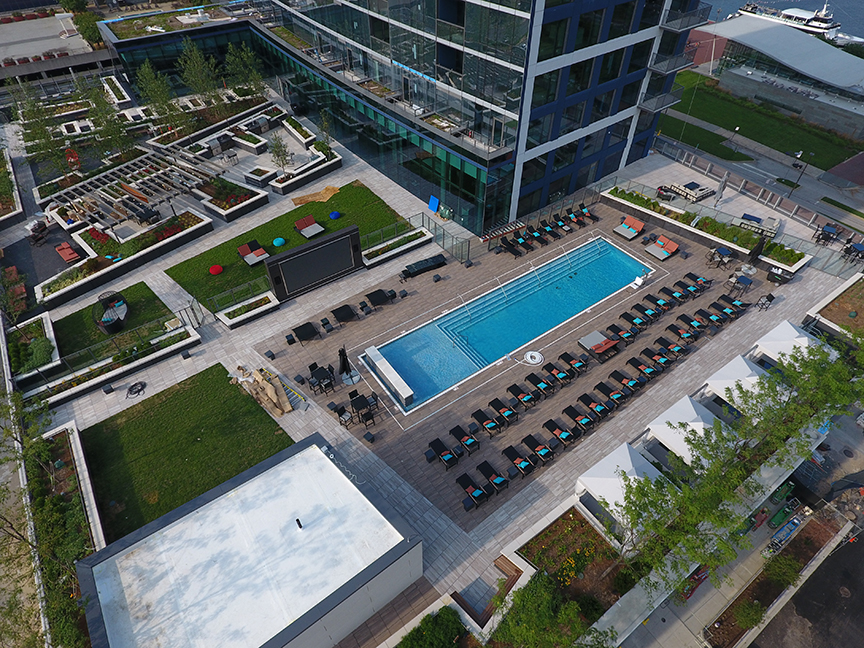
With this in mind, this residential community is taking luxury amenities to new heights. Positioned seven stories above the bustling city of Baltimore, the custom sky park at 414 Light Street features an elevated amenity-laden lifestyle — with everything from a pet spa and pet park to a 16-foot outdoor dual-sided movie theater.
Developed by Questar Properties, 414 Light Street is a 44-story tower of 394 luxury residences and is the tallest residential tower to stand in the city of Baltimore and the state of Maryland. Featuring hospitality-inspired services and amenities, the apartment tower includes 40,000-square-feet of outdoor and indoor amenity space.
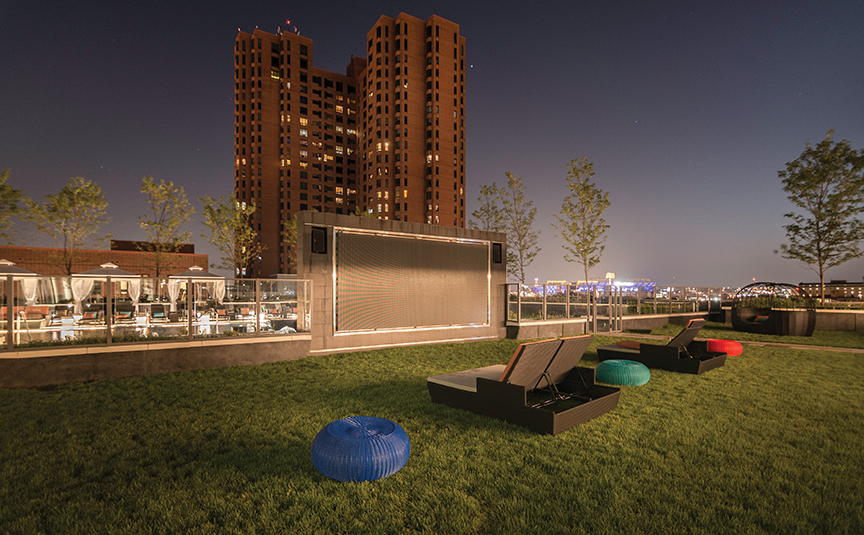
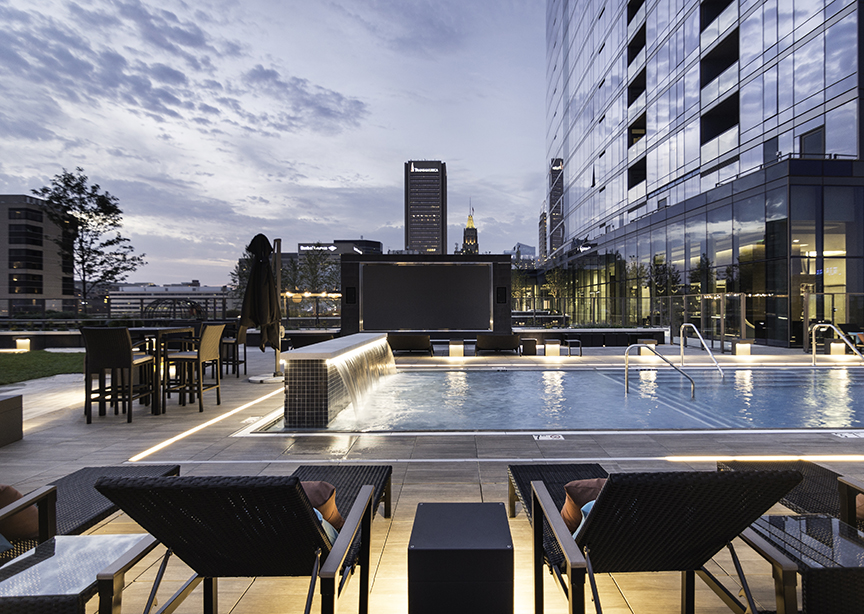
“We were looking to do something unique and distinguishing,” says developer and owner Stephen M. Gorn, CEO of Questar Properties. “We really like what we’ve done here. We’re truly creating a new standard of luxury, which is a blend between a five-star resort, five-star hotel and a luxury, residential building.”
The sky park offers multipurpose activity lawns, Al fresco kitchen and dining, community and resident gardens, a skyline terrace with a pool and cabanas, and an urban bosque with bi-monthly harvesting.
There are also several outdoor seating areas, all offering sweeping views of the city. While some offer privacy and seclusion, much of the space is also curated with entertainment in mind — boasting activities such as pool tables and televisions.
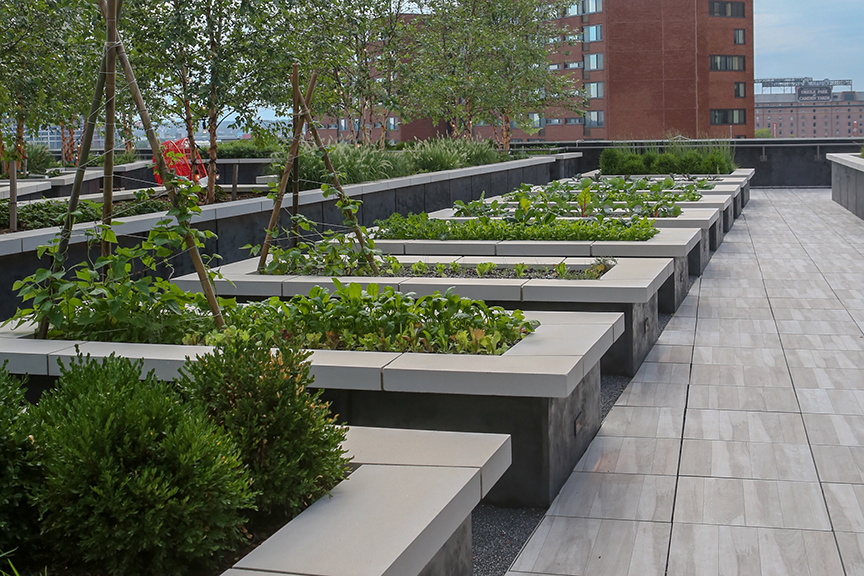
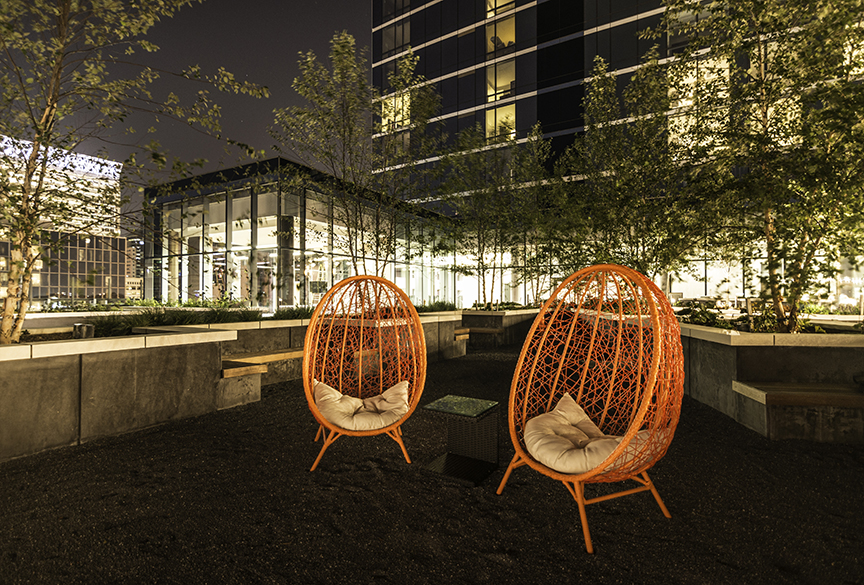
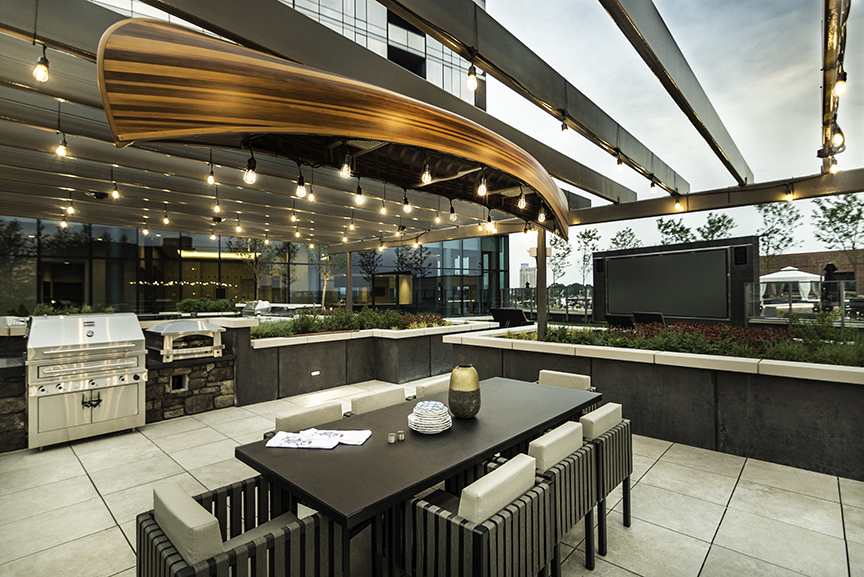
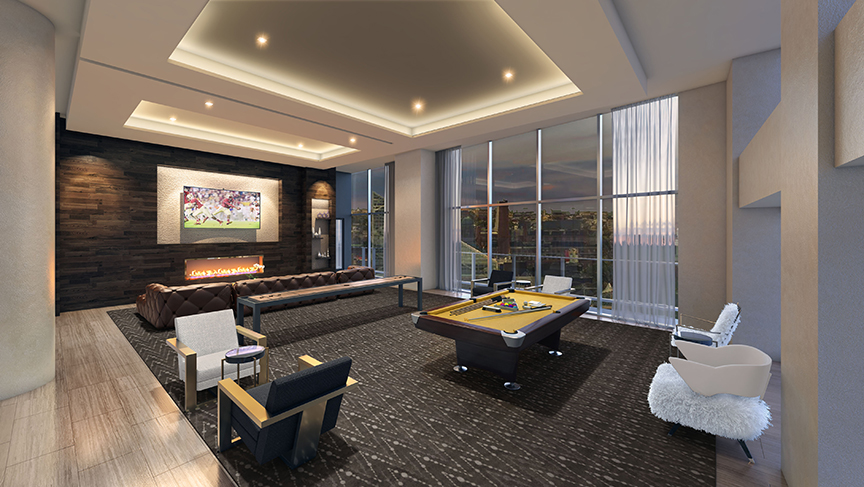

Indoor amenities include a fireside retreat room, game room, media room, entertainment kitchen and bar, yoga and meditation room, club-caliber fitness room and business lounge.
“The combination of unique amenities is really my favorite part about 414 Light Street,” Gorn says. “The sky park was inspired by this desire to create a full living experience, and to serve this market that was really underserved.”
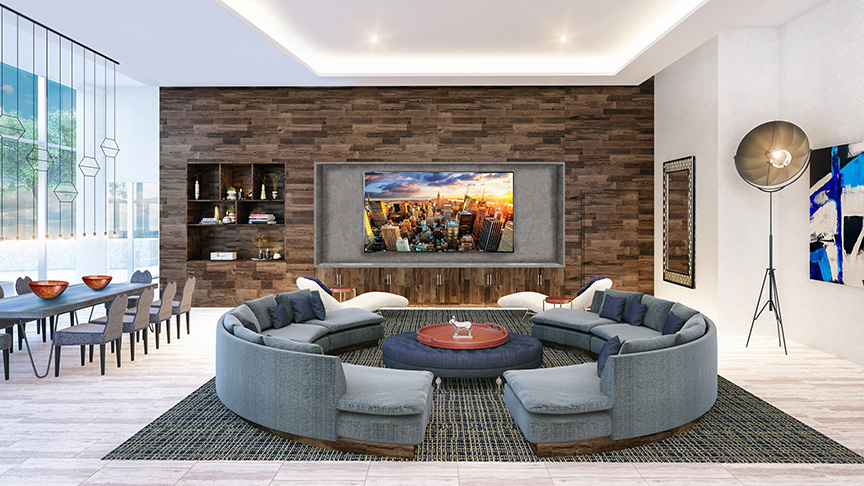
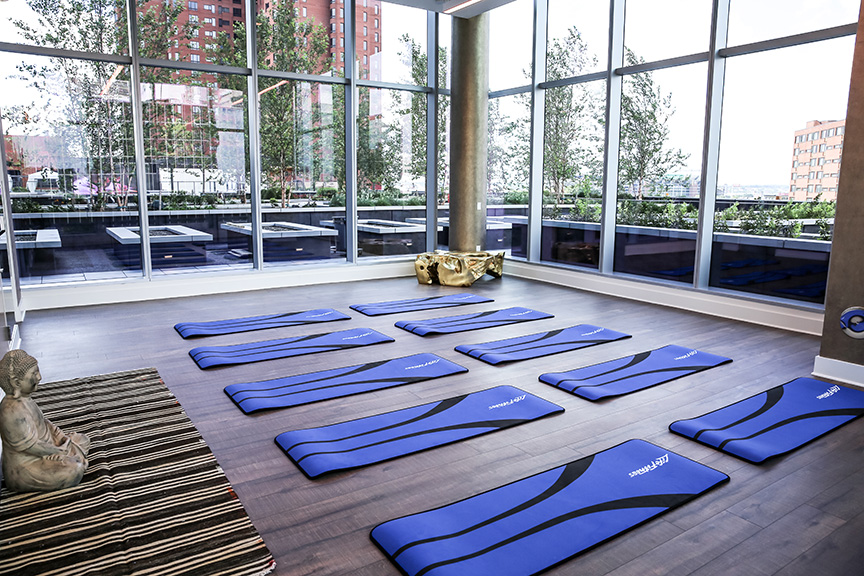
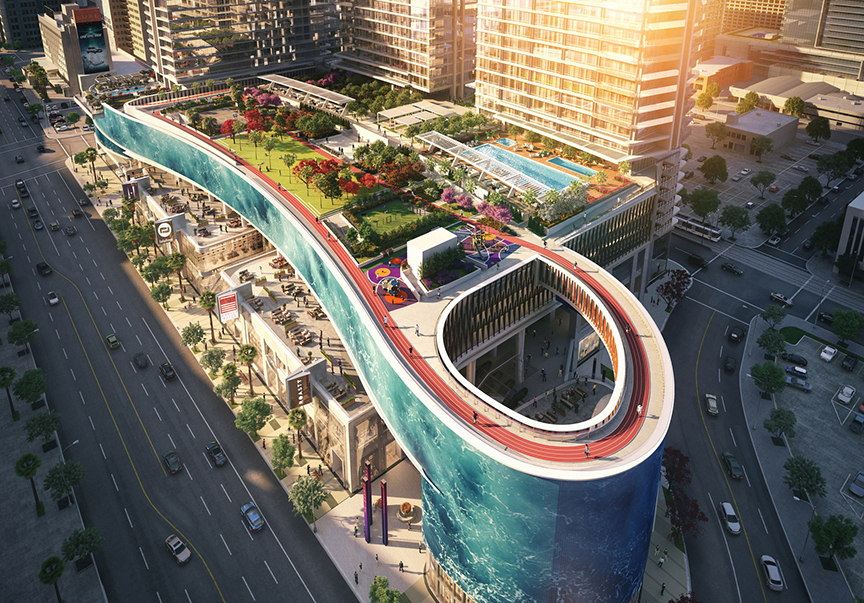
Located in Downtown Los Angeles, Oceanwide Plaza is following a similar trend. As the largest mixed-use development in Downtown Los Angeles, Oceanwide Plaza comprises three towers and boasts a 100-foot high, 2-acre sky park outfitted with 2 dog parks, a basketball court, lawns, a running track and swimming pool.
According to Gorn, the expansive design process took around six to nine months, and the project took more than 3 years from start to finish.
From the exterior to the interior, the team was very mindful of design. “We really wanted to create a design that appealed to a diverse demographic palette, from millennials to baby boomers and everything in between,” Gorn says.
Questar Properties worked in collaboration with landscape architect Wolff Landscape, and architect Solomon Cordwell Buenz. “We got together and we really challenged each other to do something creative. We wanted to do something that was very dynamic and creative,” Gorn says.

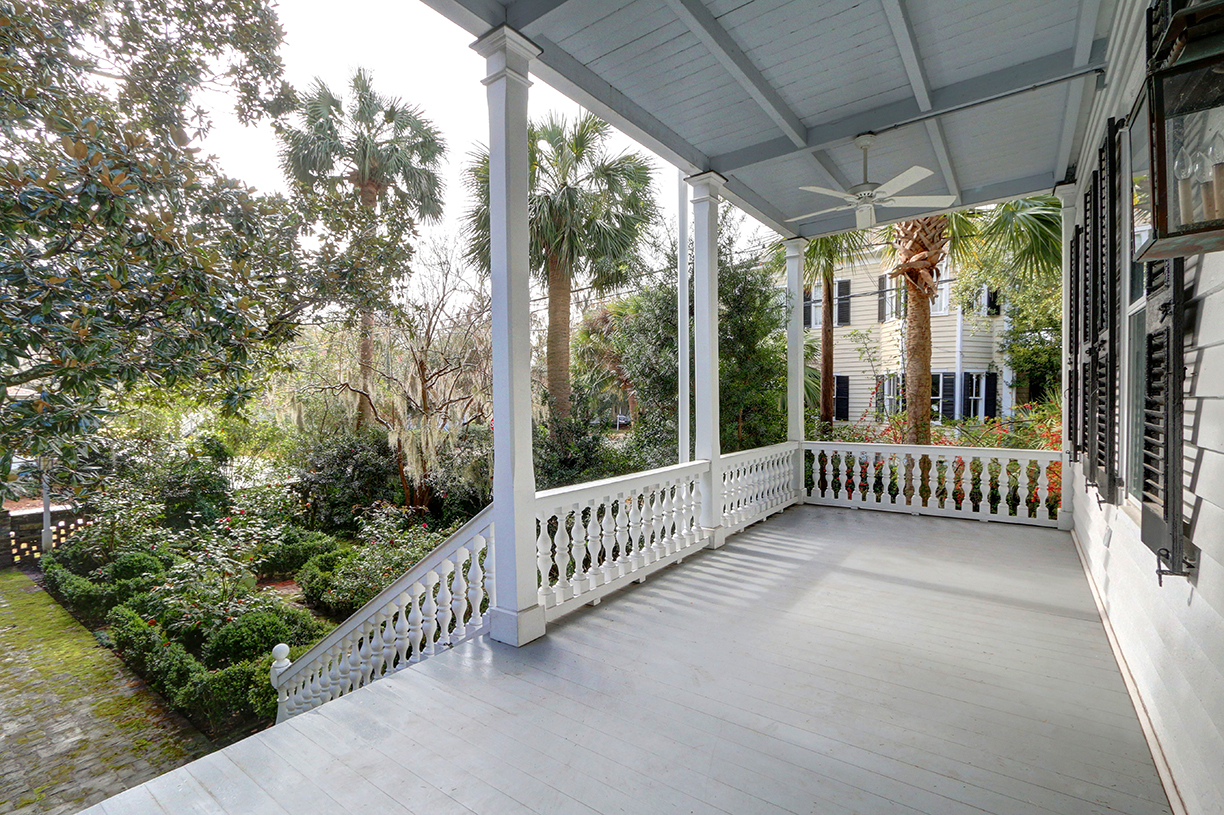
Photos courtesy of TopTenRealEstateDeals.com
Showcasing fantastic views and deed access to private Grape Bay Beach, Ardsheal Cottage is nestled in a quiet garden setting in Paget, Bermuda.
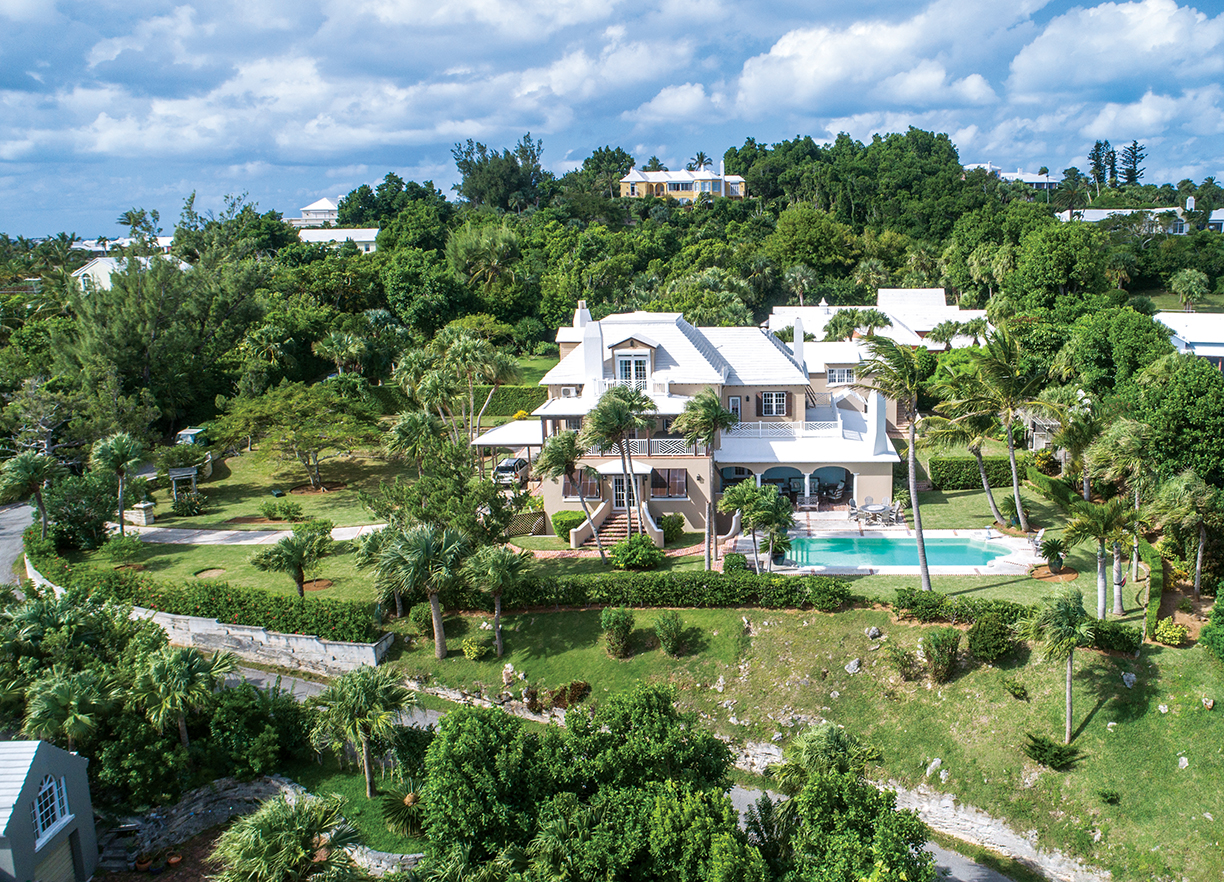
Only minutes from Hamilton, the immaculate executive home was originally constructed in 1906 and completely renovated in 2013.
“Numerous artisans were engaged during the refurbishment of the home — from the millwork, cabinetry, floor finishes and window treatments, all of which lend to an incredible first impression,” says listing agent Brian Madeiros of Coldwell Banker Bermuda Realty.
Upon entering the home, one is greeted by beautiful woodwork, Thibault wallpaper and a custom-designed triple mast schooner crystal chandelier. It also features 6,000 square feet of living space, four bedrooms, four and a half baths and an open-beam covered terrace that transitions from the kitchen to the pool deck with copious seating and a working fireplace.
“This bespoke sophisticated kitchen is perfectly designed for active families,” says Madeiros. “One could comfortably spend hours in this area of the home whilst losing all sense of time.”
Listed for $7.5 million, the home also includes a guest cottage with a full bath and kitchenette above the garage. “Ardsheal Cottage is perfectly suited for an executive and their family,” says Madeiros. “The commute from ones busy city office to the private shared beach to meet your family for an evening picnic is approximately five minutes — Ardsheal Cottage absolutely complements the lifestyle of a busy but adventurous family.”
An interior garden, an indoor rock wall and an 18-person dining room are only a few of the features that make this new, extravagant European property truly unique.
By Alyssa Gautieri
This chalet is the largest newly built chalet in Val d’Isère and it has been specifically designed to be highly unique. “This home is a leading chalet by design and size in a leading French/European resort,” said Julian Walker, the director at Skiingproperty.com.
Embracing the trend of a preference toward greenery, this home has two large terraces and an indoor atrium garden. “Over the recent years, a number of properties throughout the world, include some greenery inside as well as outside,” says Walker.
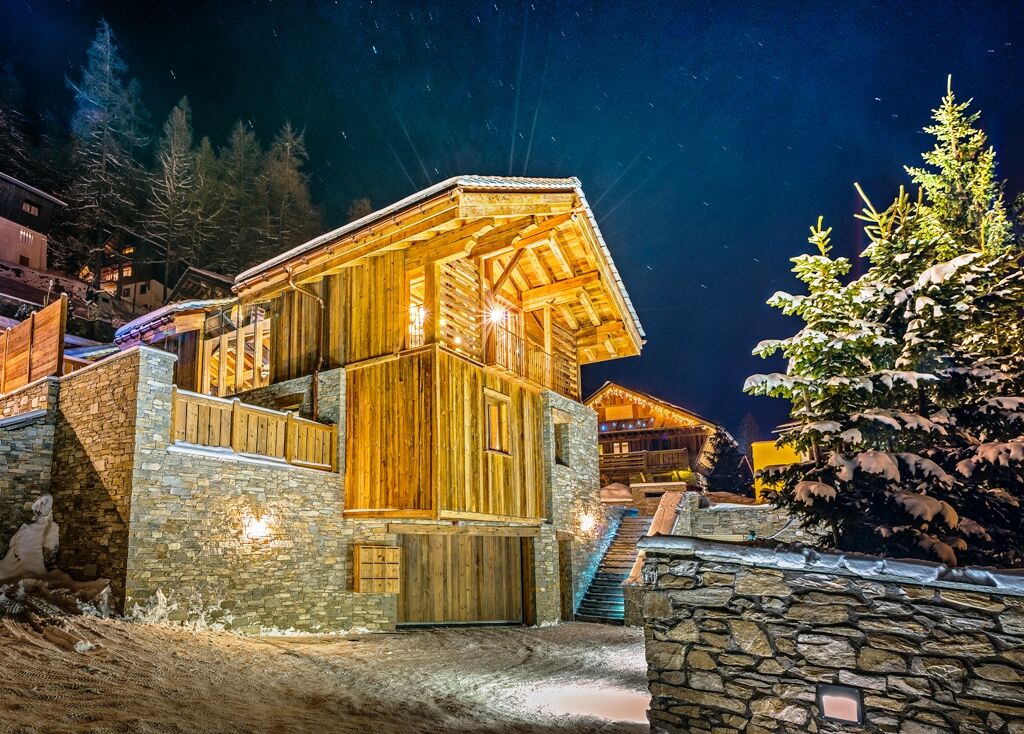
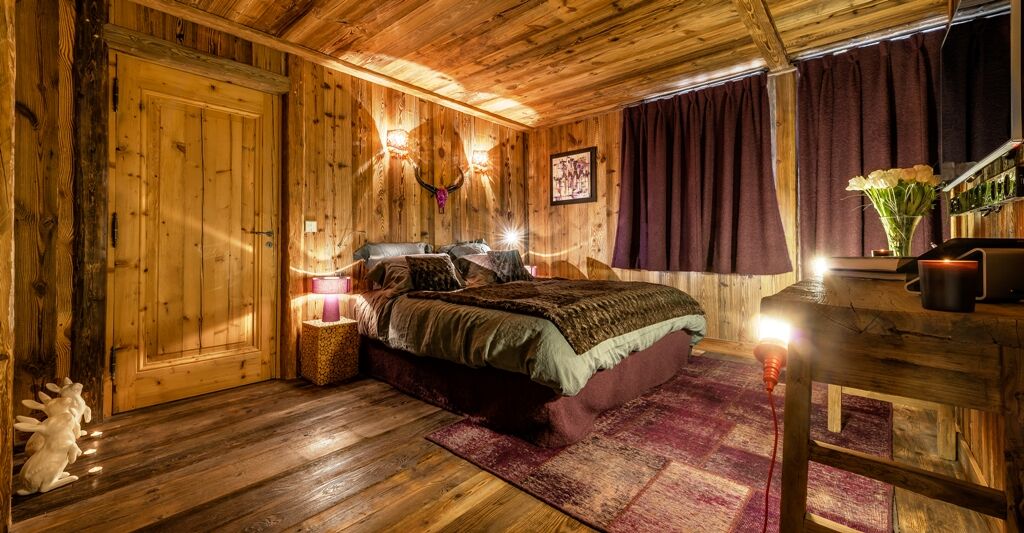
There is also a 4.5-meter high room, that is built into the rock face, which can be used as an indoor climbing room or a shooting range.
When asked why he feels this property is unique, Walker says the location along with the stunning interior design make this property truly outstanding. “The pictures do more justice than I ever could,” he said.
Other unusual features include a large heated indoor swimming pool, a Turkish bath, sauna, jacuzzi, treatment rooms, an indoor garden with a glass bridge, and a dedicated bar and relaxation area.
The two-level property offers a private lift and 609 square meters of living space. The ground floor is home to six of the seven spacious bedrooms, all of which have their own ensuite bathrooms with his-and-hers sinks.
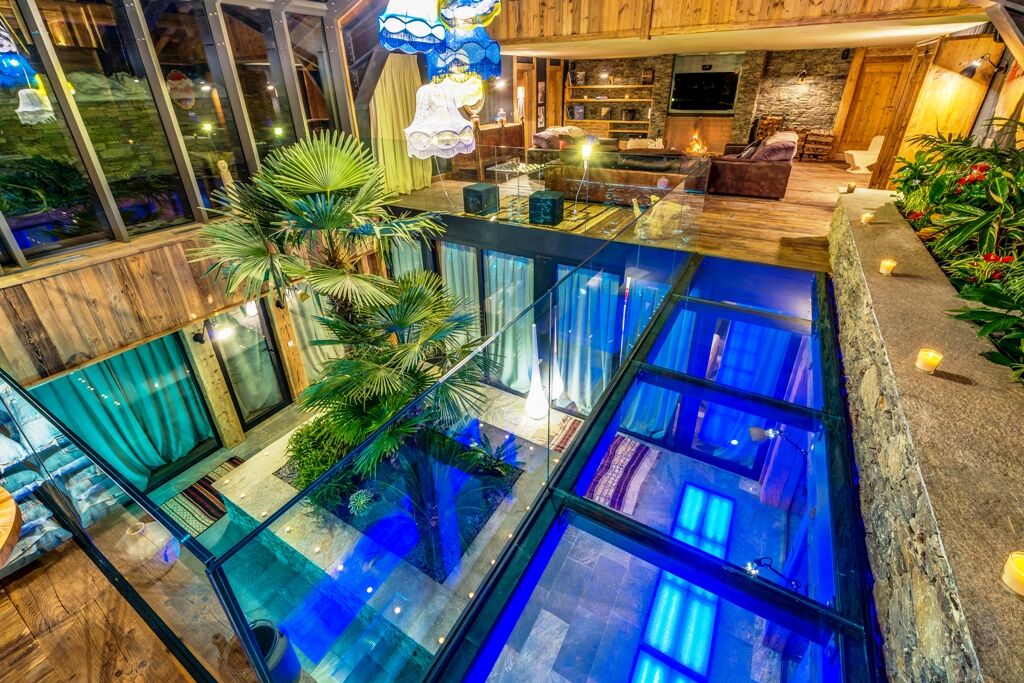
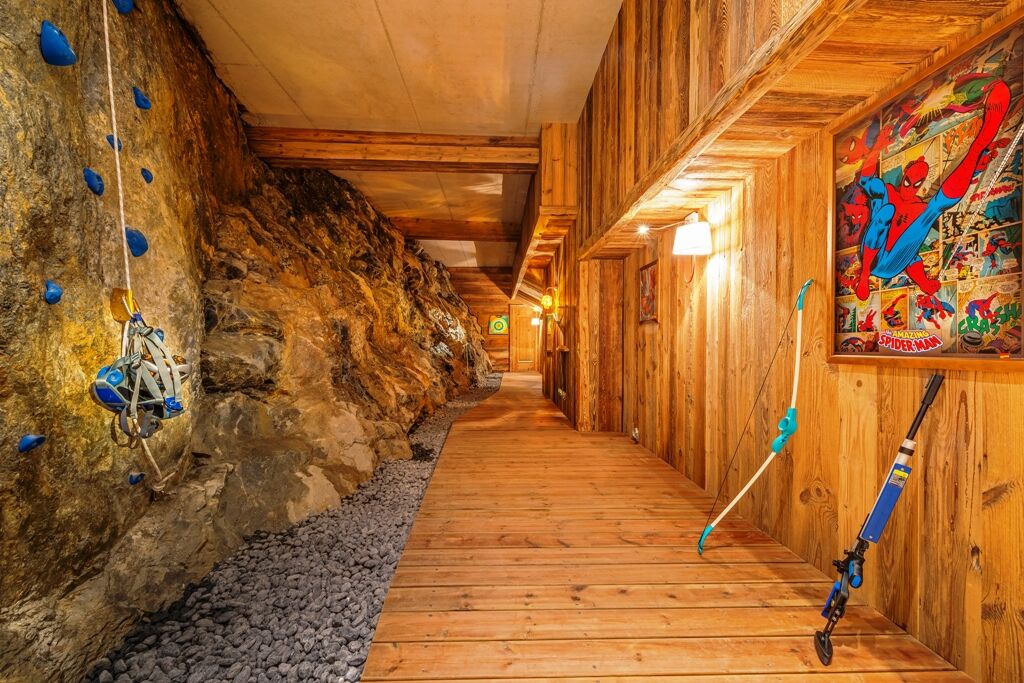
The home boasts an expansive lounge with a feature fireplace that is connected via a glass bridge to the kitchen, dining and ‘Espace Bar’ area. The dining area comfortably seats 18 people and the ‘Espace Bar’ is a skillfully created area entirely devoted to relaxation and entertainment.
Photos courtesy of Skiingproperty.com


